Niraj K. Jha
Princeton University, Princeton, USA
GraphMERT: Efficient and Scalable Distillation of Reliable Knowledge Graphs from Unstructured Data
Oct 10, 2025

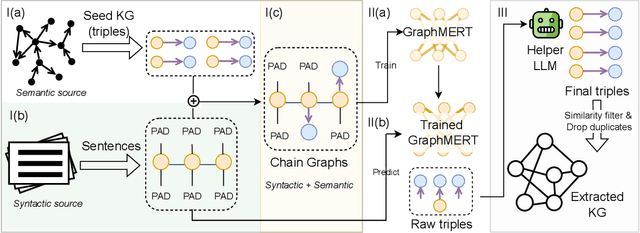

Abstract:Researchers have pursued neurosymbolic artificial intelligence (AI) applications for nearly three decades because symbolic components provide abstraction while neural components provide generalization. Thus, a marriage of the two components can lead to rapid advancements in AI. Yet, the field has not realized this promise since most neurosymbolic AI frameworks fail to scale. In addition, the implicit representations and approximate reasoning of neural approaches limit interpretability and trust. Knowledge graphs (KGs), a gold-standard representation of explicit semantic knowledge, can address the symbolic side. However, automatically deriving reliable KGs from text corpora has remained an open problem. We address these challenges by introducing GraphMERT, a tiny graphical encoder-only model that distills high-quality KGs from unstructured text corpora and its own internal representations. GraphMERT and its equivalent KG form a modular neurosymbolic stack: neural learning of abstractions; symbolic KGs for verifiable reasoning. GraphMERT + KG is the first efficient and scalable neurosymbolic model to achieve state-of-the-art benchmark accuracy along with superior symbolic representations relative to baselines. Concretely, we target reliable domain-specific KGs that are both (1) factual (with provenance) and (2) valid (ontology-consistent relations with domain-appropriate semantics). When a large language model (LLM), e.g., Qwen3-32B, generates domain-specific KGs, it falls short on reliability due to prompt sensitivity, shallow domain expertise, and hallucinated relations. On text obtained from PubMed papers on diabetes, our 80M-parameter GraphMERT yields a KG with a 69.8% FActScore; a 32B-parameter baseline LLM yields a KG that achieves only 40.2% FActScore. The GraphMERT KG also attains a higher ValidityScore of 68.8%, versus 43.0% for the LLM baseline.
LinGen: Towards High-Resolution Minute-Length Text-to-Video Generation with Linear Computational Complexity
Dec 13, 2024



Abstract:Text-to-video generation enhances content creation but is highly computationally intensive: The computational cost of Diffusion Transformers (DiTs) scales quadratically in the number of pixels. This makes minute-length video generation extremely expensive, limiting most existing models to generating videos of only 10-20 seconds length. We propose a Linear-complexity text-to-video Generation (LinGen) framework whose cost scales linearly in the number of pixels. For the first time, LinGen enables high-resolution minute-length video generation on a single GPU without compromising quality. It replaces the computationally-dominant and quadratic-complexity block, self-attention, with a linear-complexity block called MATE, which consists of an MA-branch and a TE-branch. The MA-branch targets short-to-long-range correlations, combining a bidirectional Mamba2 block with our token rearrangement method, Rotary Major Scan, and our review tokens developed for long video generation. The TE-branch is a novel TEmporal Swin Attention block that focuses on temporal correlations between adjacent tokens and medium-range tokens. The MATE block addresses the adjacency preservation issue of Mamba and improves the consistency of generated videos significantly. Experimental results show that LinGen outperforms DiT (with a 75.6% win rate) in video quality with up to 15$\times$ (11.5$\times$) FLOPs (latency) reduction. Furthermore, both automatic metrics and human evaluation demonstrate our LinGen-4B yields comparable video quality to state-of-the-art models (with a 50.5%, 52.1%, 49.1% win rate with respect to Gen-3, LumaLabs, and Kling, respectively). This paves the way to hour-length movie generation and real-time interactive video generation. We provide 68s video generation results and more examples in our project website: https://lineargen.github.io/.
COMFORT: A Continual Fine-Tuning Framework for Foundation Models Targeted at Consumer Healthcare
Sep 14, 2024



Abstract:Wearable medical sensors (WMSs) are revolutionizing smart healthcare by enabling continuous, real-time monitoring of user physiological signals, especially in the field of consumer healthcare. The integration of WMSs and modern machine learning (ML) enables unprecedented solutions to efficient early-stage disease detection. Despite the success of Transformers in various fields, their application to sensitive domains, such as smart healthcare, remains underexplored due to limited data accessibility and privacy concerns. To bridge the gap between Transformer-based foundation models and WMS-based disease detection, we propose COMFORT, a continual fine-tuning framework for foundation models targeted at consumer healthcare. COMFORT introduces a novel approach for pre-training a Transformer-based foundation model on a large dataset of physiological signals exclusively collected from healthy individuals with commercially available WMSs. We adopt a masked data modeling (MDM) objective to pre-train this health foundation model. We then fine-tune the model using various parameter-efficient fine-tuning (PEFT) methods, such as low-rank adaptation (LoRA) and its variants, to adapt it to various downstream disease detection tasks that rely on WMS data. In addition, COMFORT continually stores the low-rank decomposition matrices obtained from the PEFT algorithms to construct a library for multi-disease detection. The COMFORT library enables scalable and memory-efficient disease detection on edge devices. Our experimental results demonstrate that COMFORT achieves highly competitive performance while reducing memory overhead by up to 52% relative to conventional methods. Thus, COMFORT paves the way for personalized and proactive solutions to efficient and effective early-stage disease detection for consumer healthcare.
Learning Interpretable Differentiable Logic Networks
Jul 04, 2024Abstract:The ubiquity of neural networks (NNs) in real-world applications, from healthcare to natural language processing, underscores their immense utility in capturing complex relationships within high-dimensional data. However, NNs come with notable disadvantages, such as their "black-box" nature, which hampers interpretability, as well as their tendency to overfit the training data. We introduce a novel method for learning interpretable differentiable logic networks (DLNs) that are architectures that employ multiple layers of binary logic operators. We train these networks by softening and differentiating their discrete components, e.g., through binarization of inputs, binary logic operations, and connections between neurons. This approach enables the use of gradient-based learning methods. Experimental results on twenty classification tasks indicate that differentiable logic networks can achieve accuracies comparable to or exceeding that of traditional NNs. Equally importantly, these networks offer the advantage of interpretability. Moreover, their relatively simple structure results in the number of logic gate-level operations during inference being up to a thousand times smaller than NNs, making them suitable for deployment on edge devices.
METRIK: Measurement-Efficient Randomized Controlled Trials using Transformers with Input Masking
Jun 24, 2024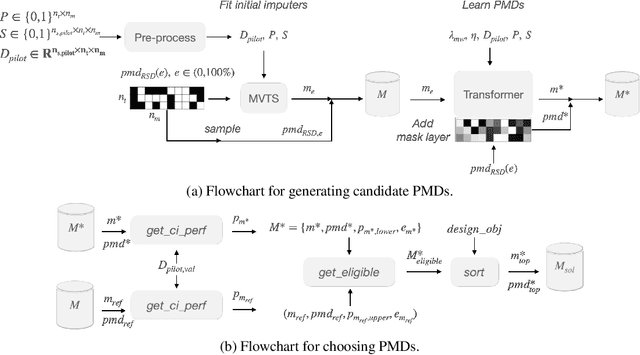

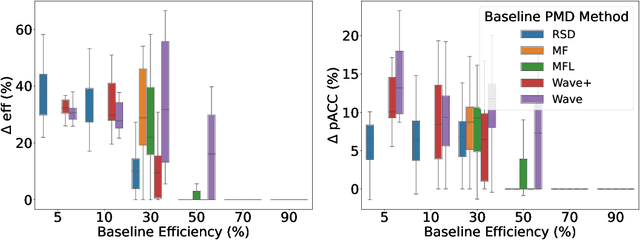
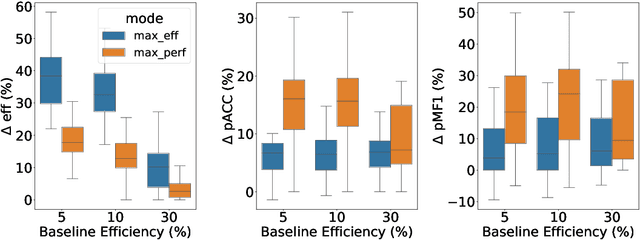
Abstract:Clinical randomized controlled trials (RCTs) collect hundreds of measurements spanning various metric types (e.g., laboratory tests, cognitive/motor assessments, etc.) across 100s-1000s of subjects to evaluate the effect of a treatment, but do so at the cost of significant trial expense. To reduce the number of measurements, trial protocols can be revised to remove metrics extraneous to the study's objective, but doing so requires additional human labor and limits the set of hypotheses that can be studied with the collected data. In contrast, a planned missing design (PMD) can reduce the amount of data collected without removing any metric by imputing the unsampled data. Standard PMDs randomly sample data to leverage statistical properties of imputation algorithms, but are ad hoc, hence suboptimal. Methods that learn PMDs produce more sample-efficient PMDs, but are not suitable for RCTs because they require ample prior data (150+ subjects) to model the data distribution. Therefore, we introduce a framework called Measurement EfficienT Randomized Controlled Trials using Transformers with Input MasKing (METRIK), which, for the first time, calculates a PMD specific to the RCT from a modest amount of prior data (e.g., 60 subjects). Specifically, METRIK models the PMD as a learnable input masking layer that is optimized with a state-of-the-art imputer based on the Transformer architecture. METRIK implements a novel sampling and selection algorithm to generate a PMD that satisfies the trial designer's objective, i.e., whether to maximize sampling efficiency or imputation performance for a given sampling budget. Evaluated across five real-world clinical RCT datasets, METRIK increases the sampling efficiency of and imputation performance under the generated PMD by leveraging correlations over time and across metrics, thereby removing the need to manually remove metrics from the RCT.
CONFINE: Conformal Prediction for Interpretable Neural Networks
Jun 01, 2024



Abstract:Deep neural networks exhibit remarkable performance, yet their black-box nature limits their utility in fields like healthcare where interpretability is crucial. Existing explainability approaches often sacrifice accuracy and lack quantifiable measures of prediction uncertainty. In this study, we introduce Conformal Prediction for Interpretable Neural Networks (CONFINE), a versatile framework that generates prediction sets with statistically robust uncertainty estimates instead of point predictions to enhance model transparency and reliability. CONFINE not only provides example-based explanations and confidence estimates for individual predictions but also boosts accuracy by up to 3.6%. We define a new metric, correct efficiency, to evaluate the fraction of prediction sets that contain precisely the correct label and show that CONFINE achieves correct efficiency of up to 3.3% higher than the original accuracy, matching or exceeding prior methods. CONFINE's marginal and class-conditional coverages attest to its validity across tasks spanning medical image classification to language understanding. Being adaptable to any pre-trained classifier, CONFINE marks a significant advance towards transparent and trustworthy deep learning applications in critical domains.
Attention-Driven Training-Free Efficiency Enhancement of Diffusion Models
May 08, 2024
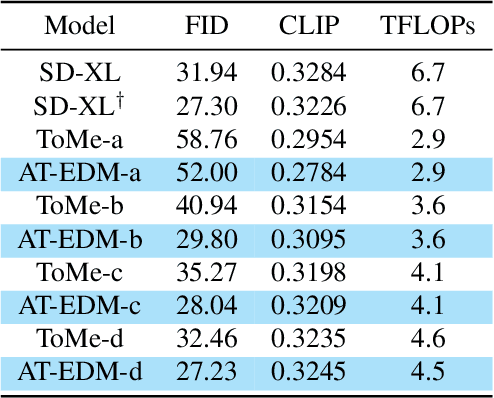


Abstract:Diffusion Models (DMs) have exhibited superior performance in generating high-quality and diverse images. However, this exceptional performance comes at the cost of expensive architectural design, particularly due to the attention module heavily used in leading models. Existing works mainly adopt a retraining process to enhance DM efficiency. This is computationally expensive and not very scalable. To this end, we introduce the Attention-driven Training-free Efficient Diffusion Model (AT-EDM) framework that leverages attention maps to perform run-time pruning of redundant tokens, without the need for any retraining. Specifically, for single-denoising-step pruning, we develop a novel ranking algorithm, Generalized Weighted Page Rank (G-WPR), to identify redundant tokens, and a similarity-based recovery method to restore tokens for the convolution operation. In addition, we propose a Denoising-Steps-Aware Pruning (DSAP) approach to adjust the pruning budget across different denoising timesteps for better generation quality. Extensive evaluations show that AT-EDM performs favorably against prior art in terms of efficiency (e.g., 38.8% FLOPs saving and up to 1.53x speed-up over Stable Diffusion XL) while maintaining nearly the same FID and CLIP scores as the full model. Project webpage: https://atedm.github.io.
DynaMo: Accelerating Language Model Inference with Dynamic Multi-Token Sampling
May 01, 2024



Abstract:Traditional language models operate autoregressively, i.e., they predict one token at a time. Rapid explosion in model sizes has resulted in high inference times. In this work, we propose DynaMo, a suite of multi-token prediction language models that reduce net inference times. Our models $\textit{dynamically}$ predict multiple tokens based on their confidence in the predicted joint probability distribution. We propose a lightweight technique to train these models, leveraging the weights of traditional autoregressive counterparts. Moreover, we propose novel ways to enhance the estimated joint probability to improve text generation quality, namely co-occurrence weighted masking and adaptive thresholding. We also propose systematic qualitative and quantitative methods to rigorously test the quality of generated text for non-autoregressive generation. One of the models in our suite, DynaMo-7.3B-T3, achieves same-quality generated text as the baseline (Pythia-6.9B) while achieving 2.57$\times$ speed-up with only 5.87% and 2.67% parameter and training time overheads, respectively.
PAGE: Domain-Incremental Adaptation with Past-Agnostic Generative Replay for Smart Healthcare
Mar 13, 2024
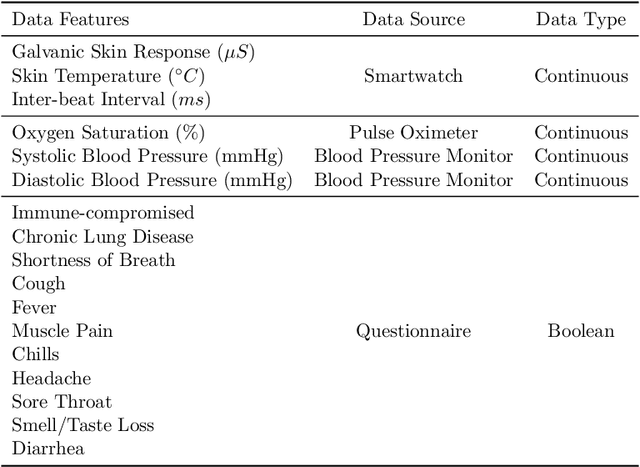

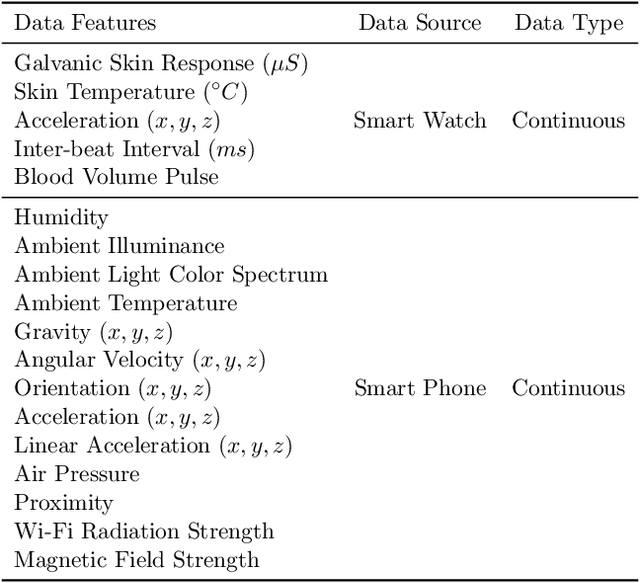
Abstract:We propose PAGE, a domain-incremental adaptation strategy with past-agnostic generative replay for smart healthcare. PAGE enables generative replay without the aid of any preserved data or information from prior domains. When adapting to a new domain, it exploits real data from the new distribution and the current model to generate synthetic data that retain the learned knowledge of previous domains. By replaying the synthetic data with the new real data during training, PAGE achieves a good balance between domain adaptation and knowledge retention. In addition, we incorporate an extended inductive conformal prediction (EICP) method into PAGE to produce a confidence score and a credibility value for each detection result. This makes the predictions interpretable and provides statistical guarantees for disease detection in smart healthcare applications. We demonstrate PAGE's effectiveness in domain-incremental disease detection with three distinct disease datasets collected from commercially available WMSs. PAGE achieves highly competitive performance against state-of-the-art with superior scalability, data privacy, and feasibility. Furthermore, PAGE can enable up to 75% reduction in clinical workload with the help of EICP.
TAD-SIE: Sample Size Estimation for Clinical Randomized Controlled Trials using a Trend-Adaptive Design with a Synthetic-Intervention-Based Estimator
Jan 08, 2024Abstract:Phase-3 clinical trials provide the highest level of evidence on drug safety and effectiveness needed for market approval by implementing large randomized controlled trials (RCTs). However, 30-40% of these trials fail mainly because such studies have inadequate sample sizes, stemming from the inability to obtain accurate initial estimates of average treatment effect parameters. To remove this obstacle from the drug development cycle, we present a new algorithm called Trend-Adaptive Design with a Synthetic-Intervention-Based Estimator (TAD-SIE) that appropriately powers a parallel-group trial, a standard RCT design, by leveraging a state-of-the-art hypothesis testing strategy and a novel trend-adaptive design (TAD). Specifically, TAD-SIE uses SECRETS (Subject-Efficient Clinical Randomized Controlled Trials using Synthetic Intervention) for hypothesis testing, which simulates a cross-over trial in order to boost power; doing so, makes it easier for a trial to reach target power within trial constraints (e.g., sample size limits). To estimate sample sizes, TAD-SIE implements a new TAD tailored to SECRETS given that SECRETS violates assumptions under standard TADs. In addition, our TAD overcomes the ineffectiveness of standard TADs by allowing sample sizes to be increased across iterations without any condition while controlling significance level with futility stopping. On a real-world Phase-3 clinical RCT (i.e., a two-arm parallel-group superiority trial with an equal number of subjects per arm), TAD-SIE reaches typical target operating points of 80% or 90% power and 5% significance level in contrast to baseline algorithms that only get at best 59% power and 4% significance level.
 Add to Chrome
Add to Chrome Add to Firefox
Add to Firefox Add to Edge
Add to Edge